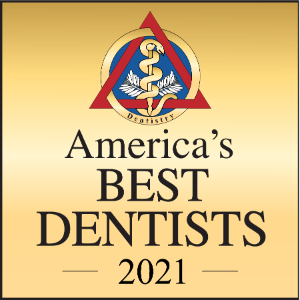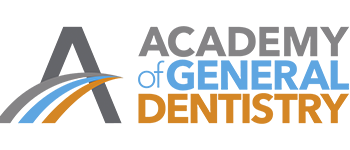Grasping the full spectrum of dental emergency symptoms enables individuals to seek timely treatment, optimally preserving their oral health. The essence of quick and effective care lies in the ability to identify and react to key warning signs that reflect potentially serious underlying conditions. Three primary symptoms can often indicate the necessity for immediate dental attention: severe pain, swelling, and uncontrolled bleeding.
Severe toothache, for instance, often alerts to an abscess or deep cavities; it’s a symptom that should not be taken lightly. For example, a sudden onset of intense pain could imply nerve damage or an infection that, if not promptly treated, may lead to tooth loss or systemic infection. Patients should understand the significance of severe pain as a signal that the body is facing a critical issue needing urgent dental evaluation.
Swelling in the gums or face should be considered an urgent symptom, potentially pointing to an infection like gingivitis or a more severe abscess. Unlike normal inflammation after a minor injury or surgery, persistent swelling often requires an emergency dental visit to prevent the spread of infection that could compromise one’s overall health. Highlighting the difference between typical post-procedural swelling and abnormally enduring swelling is key in patient education.
Uncontrolled bleeding from the gums or teeth is an immediate red flag. Persistent bleeding after actions like brushing or flossing could indicate periodontal disease or result from trauma that has damaged soft oral tissues or dislodged a tooth. Patients should be encouraged to regard such bleeding as an emergency, understanding that responding swiftly can significantly aid in their recovery process and potentially prevent worsening conditions.
Recognizing When You Need Emergency Care
Recognizing a dental emergency is important for effective and timely treatment, ensuring not just dental health but overall well-being. Dental emergencies typically manifest through specific symptoms that signal the need for urgent medical response. These symptoms are distinct from ordinary dental discomfort and include severe pain, persistent bleeding, and signs of infection, which if neglected, can lead to complex health issues.
Severe pain in the teeth or gums is a clear indicator that something is wrong. It’s not the mild ache that comes and goes but a deep, throbbing sensation that persists, disrupting daily activities and signaling potential emergencies like an abscess or trauma. Patients experiencing such pain should see it as a directive for immediate dental consultation to prevent extended suffering and possible escalation of the condition.
Persistent bleeding is another alarming sign that warrants quick attention. Unlike minor bleeding from occasional flossing, continuous bleeding speaks to more serious concerns such as advanced periodontitis or injury. Prompt care in such cases can reduce the risk of further damage and foster proper healing:
- Severe Pain Signs: Deep, throbbing sensation that disrupts daily activities and signals emergencies
- Persistent Bleeding: Continuous bleeding indicates serious concerns beyond normal flossing irritation
- Infection Evidence: Swelling or bad taste may point to infections requiring rapid treatment
- Immediate Action: Recognizing and responding to these signs protects overall health
Evidence of infection, such as swelling or a bad taste in the mouth, should not be overlooked. These symptoms can point to severe infections that, without rapid treatment, may spread beyond the oral cavity, impacting overall health. Recognizing and acting upon these signs are crucial steps that Dr. Brenner’s practice strives to impart to its patients, stressing immediate action to safeguard their health.
Severe Tooth Pain as a Warning Signal
Severe tooth pain functions as an urgent distress signal from the body, often indicating the presence of a significant dental issue that requires prompt professional attention. Neglecting such pain may not only worsen the problem but could also result in the need for extensive dental procedures. Three specific signs of serious dental conditions include sharp, sudden pain; aching pain that persists; and increased sensitivity or discomfort when consuming hot or cold foods or beverages.
Sharp, stabbing pain often suggests an abscess or deep decay that has reached the nerve. This type of intense and localized pain should never be ignored as it can quickly develop into a more severe infection. In contrast, a persistent ache might indicate an impacted tooth or advanced gum disease. It’s a continuous sensation of discomfort that can’t be relieved with over-the-counter painkillers.
Increased sensitivity or discomfort, particularly in response to temperature changes, could be symptomatic of a cracked tooth or worn enamel. This type of pain is often a signal of dental weaknesses that, while not always urgent, should be evaluated by a dentist to prevent progression into more critical issues. Patients should consider this symptom as a reason to schedule a timely visit to prevent further damage and maintain their oral health.
Swelling: Indicator of Underlying Infection
Swelling in the gums or facial area should be recognized as a sign of an underlying dental infection, often requiring swift attention from a healthcare professional to prevent escalation into more serious conditions. When encountering such swelling, patients should identify this as an urgent cue to seek immediate dental care due to the potential for the infection to progress and spread.
Sudden or pronounced swelling in the dental region should be viewed as a distress signal. Gum inflammation or facial puffiness can be manifestations of an abscess or a severe gum infection, presenting not just as minor tenderness but as significant, sometimes rapid enlargement that affects normal function. Such pronounced swelling is a stark reminder of the importance of dental wellbeing to overall health.
Differentiating between minor and critical swelling is crucial for patient care. For instance, mild inflammation following a dental procedure differs greatly from the swelling associated with an untreated infection that doesn’t improve over time. This distinction is essential as it guides the appropriate medical response, mild cases might require simple home care, while severe cases call for urgent dental intervention.
Ignoring severe swelling can lead to serious health repercussions. Without professional assessment and treatment, what starts as a localized infection can become systemic, affecting the entire body and increasing the risk of health decline. It’s important for patients to understand the gravity of this symptom, they should not dismiss it as a benign issue but treat it with the seriousness it deserves.
Uncontrolled Bleeding: Identifying Serious Cases
Uncontrolled bleeding in the mouth is a red flag requiring immediate medical attention. It’s crucial to address this symptom quickly to prevent further complications. Three aspects that are important to consider include recognizing the signs of serious bleeding, understanding the immediate responses needed, and acknowledging the importance of professional evaluation.
Significant bleeding after routine dental actions, such as brushing or flossing, is not typical and might suggest the presence of advanced gum disease or indicate that a dental procedure has disturbed the gums. When bleeding is excessive and doesn’t cease with standard home care measures like applying pressure, it’s a sign that urgent dental care is needed.
Upon identifying serious oral bleeding, it’s important to respond appropriately. Initial steps include rinsing the mouth with saline solution to clear the area, applying pressure with a clean cloth or gauze to the bleeding site, and avoiding agitation to the area to prevent further bleeding:
- Recognition Signs: Excessive bleeding that doesn’t stop with standard pressure application
- Initial Response: Saline rinse, clean pressure application, and avoiding area agitation
- Professional Need: Dentist expertise required for underlying cause determination and advanced treatment
- Advanced Options: Suturing and medication management beyond self-care capabilities
Dental professionals play a critical role in managing uncontrolled bleeding. They can determine the underlying cause, whether it be physical trauma or a dental condition, and provide the necessary treatment. Their expertise is essential as they can offer more advanced treatment options, such as suturing or prescribing medication.
Effective Emergency Response Strategy
Effective management of dental emergencies is anchored in a clear strategy that prioritizes pain relief and patient well-being. Dr. Brenner’s dental practice has crafted such an approach, designed to ensure patients receive the care they need without delay. This strategy encompasses three critical components: prompt access to care, comprehensive diagnostic capabilities, and an emphasis on patient comfort and pain management.
Immediate access to care is important during a dental emergency. Dr. Brenner’s practice offers same-day appointments to address urgent dental issues, ensuring that patients don’t have to endure prolonged discomfort. This quick response capability is vital in preventing the exacerbation of dental emergencies and is a cornerstone of the practice’s patient-centered approach.
Advanced diagnostic tools are utilized to quickly identify the nature of the emergency. State-of-the-art equipment aids in pinpointing the problem, whether it’s an infection, structural damage to teeth, or other acute conditions. Rapid and accurate diagnosis is key to formulating an effective treatment plan and sets the stage for successful intervention.
Throughout the emergency care process, Dr. Brenner’s team is dedicated to managing pain and ensuring patient comfort. From the initial assessment to the resolution of the issue, the practice takes a compassionate approach, administering pain relief and providing reassurance to alleviate anxiety.
Decision Criteria or Escalation Triggers
It’s critical for patients to comprehend the signs that indicate a dental issue has become an emergency, warranting immediate professional care. Acute pain, sudden swelling, and persistent bleeding serve as key indicators of potentially severe dental problems. Identifying when these symptoms require a prompt visit to the dentist is crucial for timely and appropriate treatment.
Intensity and duration of pain act as primary indicators for escalating dental issues. Pain that is sharp and severe enough to impede one’s ability to concentrate or sleep requires immediate attention, as it may be a symptom of an infection or other pressing dental conditions. Meanwhile, swelling that appears rapidly or interferes with normal functions, such as swallowing or breathing, suggests an emergency that warrants an urgent dental visit.
Persistent bleeding represents another significant escalation trigger. Bleeding that continues despite applying pressure or that recurs frequently signals a need for quick intervention, possibly pointing to periodontal issues or injuries that need professional treatment. It’s important for patients experiencing these symptoms to contact Dr. Brenner’s office without delay to minimize the risk of complications.
Support Resources or Professional Guidance
Knowledge is a powerful tool for patients when dealing with dental emergencies, and Dr. Brenner’s practice furnishes a variety of informational resources and guidance to enhance patient understanding. This educational support aims to empower patients, enabling them to recognize emergency symptoms and seek appropriate care promptly. It also highlights the practice’s dedication to fostering informed patient engagement in their dental healthcare journey.
The practice offers an array of educational materials, including brochures, videos, and online content, which explain common dental issues and their corresponding signs of escalation. This information helps patients distinguish between mild discomfort and serious symptoms that require urgent attention. By making these resources easily accessible, Dr. Brenner ensures patients have the knowledge needed to make informed decisions about their dental health.
Ensuring transparent communication is another priority for the practice. The dental team is trained to explain conditions and treatment plans thoroughly and to answer any questions patients may have, with the goal of eliminating any uncertainties or fears. This level of clarity in conversation bridges the gap between professional expertise and patient experience.
Patient guidance doesn’t end with education; the practice also prides itself on its compassionate delivery of care. In emergency situations, Dr. Brenner’s team combines technical skill with a gentle touch, ensuring patients feel supported every step of the way. This personable approach not only alleviates patient anxiety during emergencies but also affirms the practice’s commitment to holistic patient care.
Preventive Measures or Best Practices
A proactive approach to dental health, emphasizing prevention, can drastically lower the frequency of dental emergencies. Key practices include routine dental examinations, consistent oral hygiene, and the use of protective equipment during physical activities. Incorporating these habits not only contributes to better dental well-being but also significantly diminishes the risk of unexpected dental crises.
Regular dental checkups stand as a preventive cornerstone, offering a chance for early detection and intervention of dental issues before they escalate. Routine visits allow for professional cleaning, which helps prevent plaque buildup and tooth decay, and provides an opportunity for dentists to spot and address potential problems like cavities or early signs of gum disease.
Maintaining daily oral hygiene is another critical element of dental health. Proper brushing and flossing remove food particles and reduce the risk of plaque, which can lead to tooth decay and gum disease. Educating on effective techniques ensures patients are armed with the knowledge to care for their teeth and gums adequately.
Wearing protective gear during sports or other similar activities is essential to safeguard against traumatic dental injuries. Mouthguards, for instance, offer a layer of defense during high-impact sports, preventing tooth fractures, chips, or avulsions. As such, they play a vital role in preserving the integrity of the teeth and avoiding emergency dental visits.
Your Partner in Emergency Dental Care
Recognizing the urgency of dental symptoms is vital for accessing prompt and suitable care. Dr. Brenner’s dental practice exemplifies excellence in patient care by blending immediate support with educational resources. The practice’s commitment to empowering patients through education is essential for preventing dental emergencies and maintaining overall oral health.
One of the key aspects of Dr. Brenner’s approach is the provision of expert guidance which helps patients understand the importance of timely medical intervention. This professional advice clarifies the distinction between typical aches and emergency symptoms, steering patients towards making informed decisions when symptoms arise. Equipped with this knowledge, patients can take swift action in seeking care. Another critical element is the practice’s rapid response to emergencies, ensuring accessibility to the community and embodying a responsive and reliable healthcare resource.
At Dr. Bethaney Brenner’s practice in Burlington, CT, we understand that dental emergencies can be frightening and painful experiences that require immediate, expert attention. The underlying message from Dr. Brenner’s practice emphasizes the importance of not neglecting dental health, with proactive measures and patient education at the forefront of this preventive approach, highlighting the potential risks associated with ignoring the signs of a dental emergency.
Ready to ensure you’re prepared for any dental emergency and have access to immediate, expert care when you need it most? Contact Dr. Bethaney Brenner’s practice today to learn how our comprehensive approach to emergency dental care combines rapid response capabilities with patient education and preventive strategies, helping you maintain optimal oral health while providing the peace of mind that comes from knowing expert care is always available when urgent dental situations arise.







